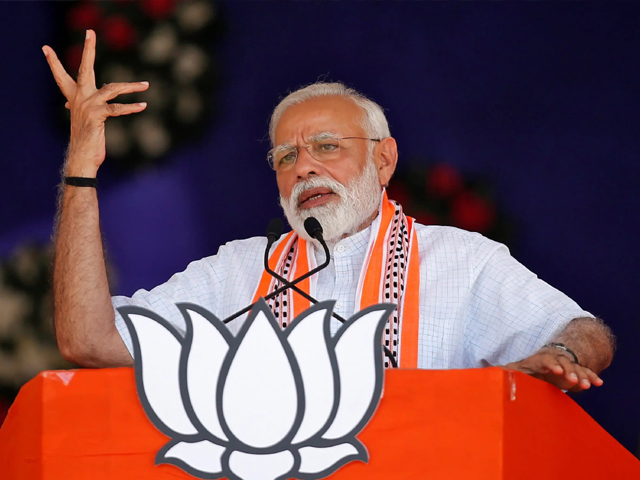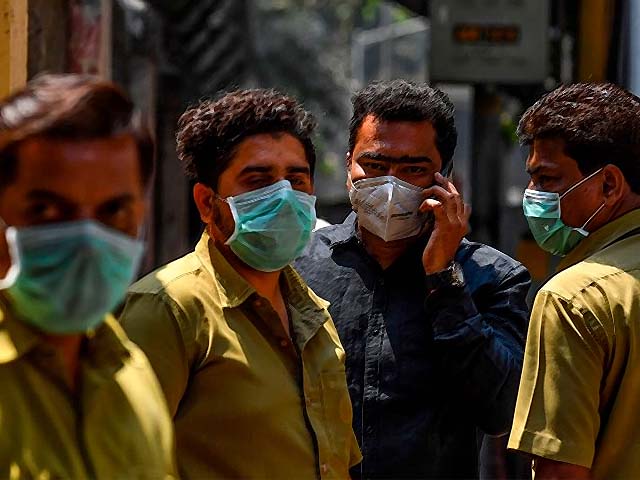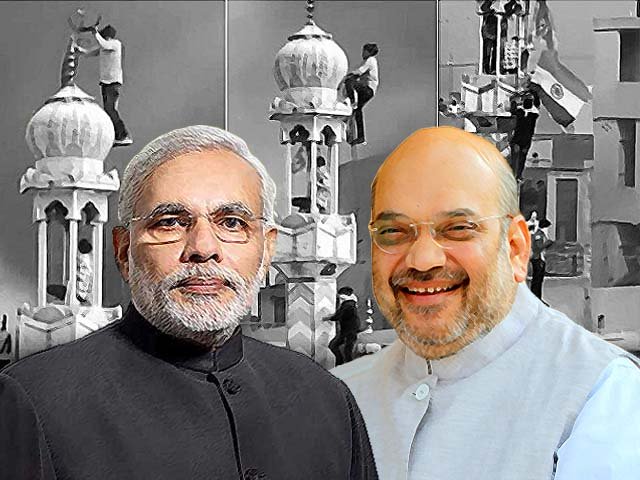
India's Prime Minister Narendra Modi addresses an election campaign rally in Junagadh, Gujarat, India on April 10, 2019. PHOTO: REUTERS
Voting for Modi again? 6 questions every Indian should ask
In none of his political rallies has Modi talked about his achievements over the last five years, and one can see why.
With India now fully in election mode, only one question reigns supreme in the minds of the people of India as well as the world: should Narendra Modi become the Indian prime minister again? Has he ushered in the “ache din” (good days) he promised five years ago?
This question is polarising India.
It is, however, a valid question. This is a man who came to power in 2014 with a promise to usher in a new era of development, coined a popular new slogan “sabka saath, sabka vikas” (collective effort, development for all), assured the nation he would address the issue of corruption, and promised a regime of maximum governance and minimum government.
Five years down the line, this is precisely the time to assess Modi’s performance and ask the question: does Modi deserve another chance in Delhi or not?
Has Modi elevated India’s economy?
Can we say today that the Indian economy is better than what Modi inherited five years ago from the previous United Progressive Alliance (UPA) government?
All indicators and parameters reveal that no, the Indian economy is not in a happy state today. The household savings rate has declined, the auto industry is down, the housing sector is in a state of crisis, while the banking sector has been stressed for years and is billions of dollars in bad debt.
Meanwhile, two of the biggest economic decisions made by the Modi regime have proved to be its nemesis.
The first is the demonetisation of the currency in 2016, which dealt a big blow to the economy. The sudden delegitimisation of 87% of India’s currency not only led to more suffering for the masses, it literally killed the informal economy which was largely dependent on cash. One estimate suggests that the gross domestic product (GDP) registered a 2% loss as a result of this policy, which many call an economic blunder.
Thus far, the government has not come forward with any plausible explanation for why it resorted to such draconian measures. The argument initially propounded was that it was meant to contain black money and corruption, but on the contrary, the measures paved the way for the entry of all black money into the banking system.
The second important economic decision was the implementation of a Goods and Services Tax (GST). The hurry to implement it across the board without giving it a try first caused immense chaos in the Indian economy, adding further stress on it. A measure which was meant to ease taxes and facilitate the easy collection of taxes became a pain as hundreds of thousands lost their jobs while many small businesses shut down.
Has Modi created the jobs that were promised?
Recent data suggests that India is currently under a terrible job crisis, with the government presiding over the worst unemployment rate in 45 years. This was revealed recently by National Sample Survey Office (NSSO) of the Indian government.
When Modi came to power, he promised to create 20 million jobs every year. But the government has clearly failed to provide a boost to the economy, and as a result more people have lost jobs over the last five years. The survey also revealed that India’s unemployment rate between July 2017 and June 2018 stood at 6.1%, the worst ever since the statistics became available for 1972. To hide its failure, the government tried to hide the dates and manipulate them, but the truth eventually came out, as it always does.
Thus, even though one of the big promises Modi made was the structural reform of the economy, no major reform has taken place.
Has Modi helped the farmers?
The agriculture crisis in India has also deepened over the last five years due to lack of incentives in that sector. The burgeoning debt has forced many farmers to commit suicides. Low crop prices, lack of drought relief as well as the debt issue has resulted in massive distress, causing thousands of farmers across the nation to protest.
Reputed science magazine Down to Earth recently stated that India is heading towards an “unprecedented rural economic crisis”. Alongside the drought, the lack of budgetary support and initiatives has led to a situation where people in rural areas are now struggling to find wages. Some of the important schemes for job creation saw unprecedented budgetary cuts, leading to a lack of jobs and an overall loss to the rural economy.
In 2014, Modi promised minimum government and maximum governance. But the truth is that today all the power is centred in the prime minister’s office, which monitors and controls every aspect of the polity and economy. This centralisation of power has defanged cabinet ministers, who today cannot even appoint their own personal assistants without the permission of the premier.
Is India more socially cohesive than it was in 2014?
Many liberals put aside their deep seated doubts about Modi’s communal image and came out to support him five years ago, hoping that the man who talks so much about development is a changed man and means business. But Modi remained the Modi of the past – a highly divisive and communal figure.
After the past five years, there exists today a palpable fear that the country is turning into a majoritarian state. Never before has any religious minority in India, particularly Indian Muslims, lived under the constant fear they are living with now. There is a systematic attempt to make them pariahs of the Indian state, which has become all the more clear from the depleting representation of Muslims in parliament as well as the Bharatiya Janata Party’s (BJP) statements.
https://twitter.com/BJP4India/status/1116246724119371776
Has Modi strengthened India’s institutions?
Over the last five years, Indian institutions have come to be undermined like never before. There is a systematic attempt to ‘hinduise’ most institutions by filling them with people from Rashtriya Swayamsevak Sangh (RSS), the BJP’s ideological mentor and a very rabid organisation promoting Hindu majoritarianism in the country.
Has Modi improved education in India?
In the field of education, the government has been trying to undermine its liberal and secular nature by appointing people with a clear majoritarian mindset. It has been trying to change history text books to make India look like a Hindu state, removing all content related to Muslims. These are not projects a progressive government takes.
If the past five years have proved anything, it is that Modi has been an utter disappointment as the prime minister.
But will this affect his re-election bid?
If one goes by opinion polls, the Modi-led alliance is ahead of its political opponents. After all, the 2019 Election is not about Modi’s performance; rather, it is about Modi’s politics of hyper nationalism.
The BJP manifesto today is deafeningly silent on the subject of ‘vikas’ (development), but it is dedicated towards nationalism. How far will this nationalism take India if its economy is crumbling while 'vikas' is no where to be seen? In none of his political rallies has the Indian premier talked about his achievements over the last five years and one can see why. Instead he harps upon the Balakot attack, using the conflict with Pakistan and selling it to the people in order to mobilise them in the name of muscular nationalism. Modi has raked up the Hindu-Muslim issue yet again, similar to what he did in Gujarat over a period of 12-and-a-half years.
Polarisation is the only weapon Modi has to secure a second term in office, but it is a weapon that will deliver him his desired results.




COMMENTS
Comments are moderated and generally will be posted if they are on-topic and not abusive.
For more information, please see our Comments FAQ